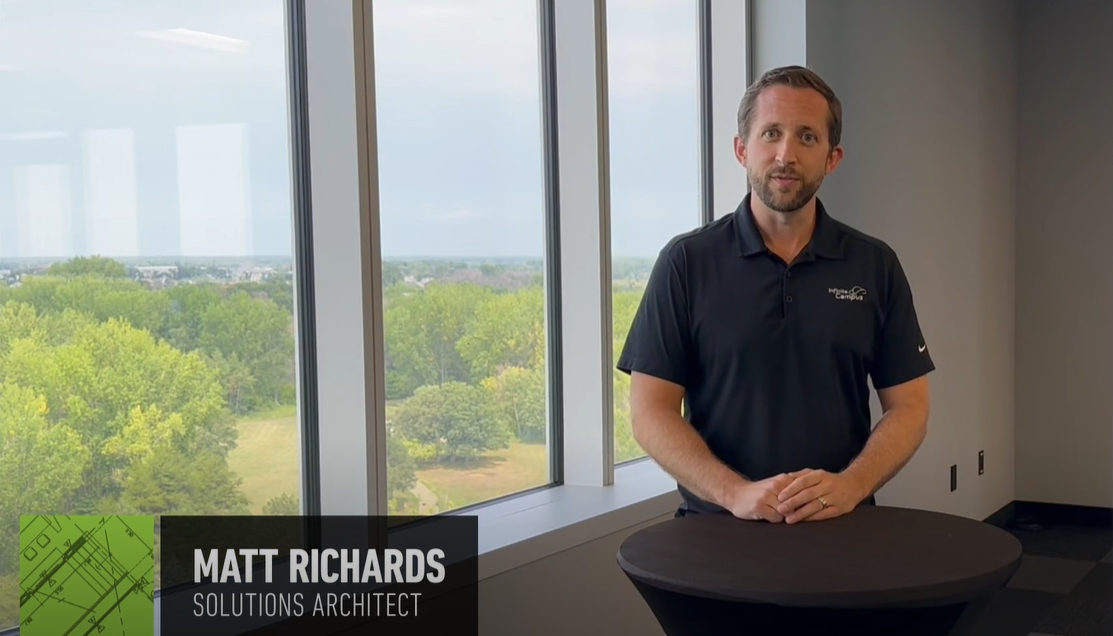
Watch Richards' full interview.
Product architecture is at the heart of every technological tool, and the Infinite Campus Student Information System (SIS) is no exception. To understand the importance of having a strong foundational architecture, we interviewed Solutions Architect Matt Richards on: why the foundational architecture is so important for an SIS; why the Infinite Campus architecture is unique compared to other student information systems; and how the architecture of an SIS can impact a district’s ability to support stakeholders and transform K12.
We have a large breadth of things we get to focus on: whether it be huge enterprise architecture discussions; talking about how to deploy individual applications onto some servers; or we’re talking about best practices with development.
Day-to-day, it can be very different. It really boils down to having a lot of conversations and collaborations with various groups. One day I could be sitting down to do architecture overviews or consultations with development teams, and the next I’ll be meeting with directors to talk about where we want our future to go.
Student information systems are an interesting beast. There’s a lot of applications out there in the world that need to focus on the right-now. For example, how do I get the best user experience for inputting data and looking at things that are happening live?
We have all those issues taking attendance and entering grades, but we also have this issue of long-term longitudinal data. How do we make sure that everybody in the school district can do the work they need to do day-to-day, while also reporting on the last twenty years of the school district’s performance.
Finding a way to balance those two in the best way possible is our responsibility from an architectural standpoint, but we must also ensure a good user experience for our customers.
Infinite Campus is in a very fortunate circumstance that we are founder-led and have been from the start. We haven’t had to rely on acquisitions, and we have never been sold. We have been able to invest in our own platform the entire time without ever wavering in confidence.
We’ve been really focused on making sure we have an architecture that is as modular as possible. When we need to make changes and/or evolve things, it’s not, "Let’s start over and rewrite." Instead, we find a way to iterate on it and slowly bring ourselves up to a more modern technology. Something that’s a little more repeatable - something that we can grow with in time.
One of the cool things about our architecture is that every one of our customers has their own single, transactional, relational database. This is a fancy way of saying all the data is in one place… and even if we add Premium Products and other additional features onto that, it’s still that same database.
We are not trying to build completely separate products and then figure out how to make them work together. They are together right from the start, and we determine how to build good user experiences on top of that.
There’s a few different things we do to help with that. First of all, we have a large set of analysts whose job is to make sure we are building the right thing for the customers. They are in touch with what our customers need and want, as well as with state laws and regulations. They are helping drive evolution of the product through time.
Additionally, we have a very consistent release model. Every four weeks we are putting out a new release pack for Infinite Campus. We want to make sure we are on top of that, and that there is a consistency by which our customers can expect to get these updates.